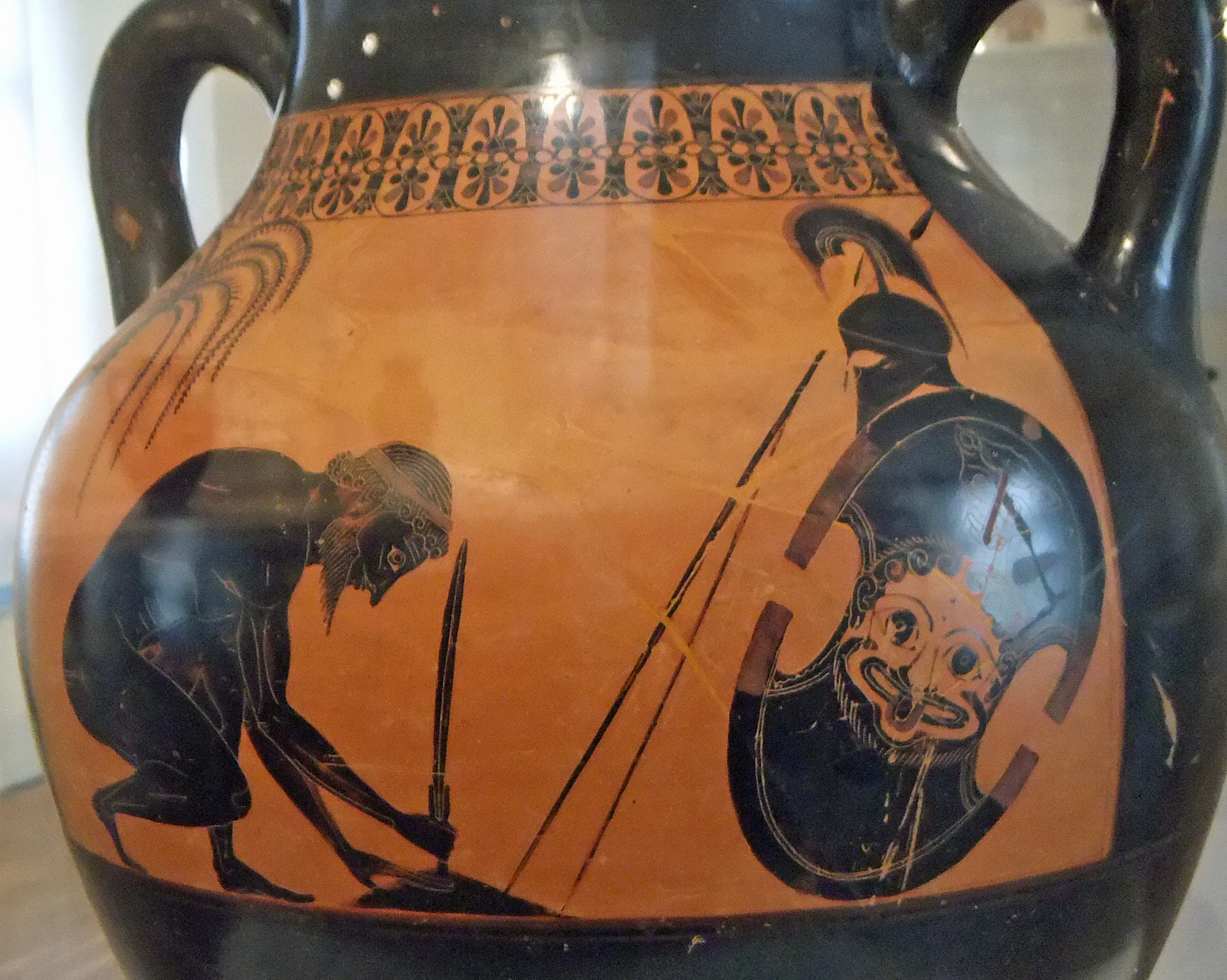This weekend, I went by this local park close to my house (the same one featured in the Oligotrophic vs. Eutrophic article!) It is so serene, pretty, and clean, yet no one knows about it! Luckily for me, it houses a wealth of Ancient Greek architecture, my favorite type of building style. We are going to explore each element, its classical components, and its integration into the landscape.
First, there are giant flower pots with cabbage plants and other flowering shrubs. Interestingly, there are geometric designs adorning the plaster exterior: meandering lines, swirls, and grape vines. The angular, continuous lines are called Meanders, or Greek Key Patterns, and they were usually painted onto ancient Greek vases used to hold liquid, food, or libations for sacrifices/funerals. The flower pot is in itself a giant amphora, or large vase that could be used for a variety of purposes. The curving design, the slight swelling of the middle, and the handles on the lip of the vase are hallmarks of this popular Greek design. Here is an amphora painted by Exekias, The Suicide of Ajax (black figure, 540 BCE). This archaic vessel is one of my favorite because of the vivid colors, poignant subject (Ajax is about to kill himself after not inheriting Achilles’ famed armor), and the way Ajax’s curving back mirrors the curving of the amphora itself. Finally, the flower pots’ imagery of luscious grapes on tangled vines directly relates to Dionysus, the Greek god of wine and drunkenness. He was a particularly popular deity in Ancient Greece because wine was a staple in the Mediterranean diet (although it was watered down for regular meals!)
 |
| Suicide of Ajax http://commons.wikimedia.org/wiki/File:Exekias_Suicide_d_Ajax_01.jpg |
Next, the entrance to this park is the façade of a Greek temple, complete with fluted columns and an authentic pediment (the triangular component at the top). The columns, without entasis (swelling), are Doric, the earliest and most basic of the Greek orders. Just to refresh your memory, the orders are Doric, Ionic, and Corinthian, although other variations such as Composite and Tuscan capitals were added later. Doric, the most humble and undecorated of the three, is the order of the Parthenon, the temple to Athena Parthenos on the Acropolis of Athens. Although the pediment would usually have contained lifelike sculptures in antiquity, the example here lacks superfluous decoration. The frieze (panel above the columns and the architrave) is plain, and also lacks the usual metopes and triglyph decoration. The bathrooms are also in the Doric order, an attempt to make a public restroom “fancy” and “classical”—even the garbage cans have fluting on them! In front of the bathrooms is a mini seating area of a Greek theater. The long steps are meant to mimic the oval theaters that littered the ancient world (first in Greece, then in the Roman Empire). The seating area was called the “theatron” and the circular area in the middle (where the fountain now is) was called the Orchestra. In antiquity, the orchestra was where the chorus sang or danced, and they were behind the skene, the area that provided a backdrop for the actors to perform in front of. The actors were usually very emotional/involved in their work because the Greeks believed the theory of the “Catharsis.” Opposite the stone theater seating and the tranquil fountain is the columned benches with wood rafters. Besides reminding me of the scene with Liesl’s “I am 16 going on 17” in the Sound of Music, the benches are similar to the stoas (open pavilions with a colonnade (row of columns) on one side) that usually dotted Greek cities. The spacious design lets light in, allows air to circulate, and can be either a bench or walkway.
Galatea
To conclude, this haven of Greek influence is splendid and full of information for architecture junkies like me. The final detail to point out is the long rectangular protrusion at the front of the park with flowers in the center. Although this shape was probably present at the entrance of many Greek temples, it reminds me of the Greeks’ love for order, symmetry, and mathematical shapes (as well as the long pool in front of the Taj Mahal!) The gray and brown stone that was used to construct the park also alludes to the marble and limestone medium that was present on many Greek buildings.
Bathrooms

No comments:
Post a Comment